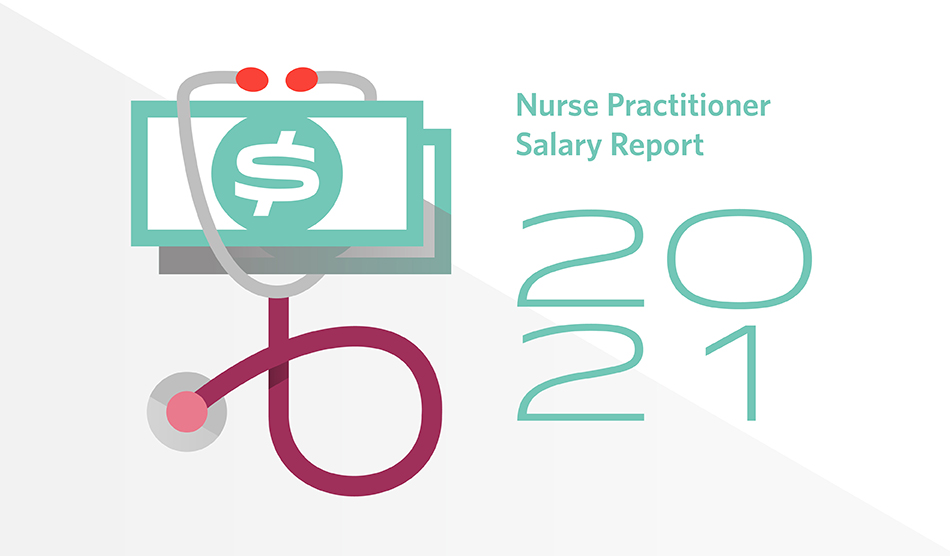Medscape recently released its 2021 APRN Compensation Report, which surveyed more than 3,300 advanced practice registered nurses, including more than 2,000 nurse practitioners. The report offers important insights into the factors that influenced NP salaries in 2020.
COVID’s impact on NP earnings, employment
While the survey was conducted in 2021, respondents were asked to report on 2020 compensation. Accordingly, the impact of the global pandemic was starkly felt across all APRN types — from job loss and furloughs to reduction in hours and forgone raises.
While nearly half of NP respondents reported little to no impact to hours or wages, more than a quarter reported not receiving an annual raise, and 15% reported a reduction in hours. Nine percent of NPs surveyed were furloughed for some period of time, 4% were required to work part-time instead of full-time, and 3% were laid off.
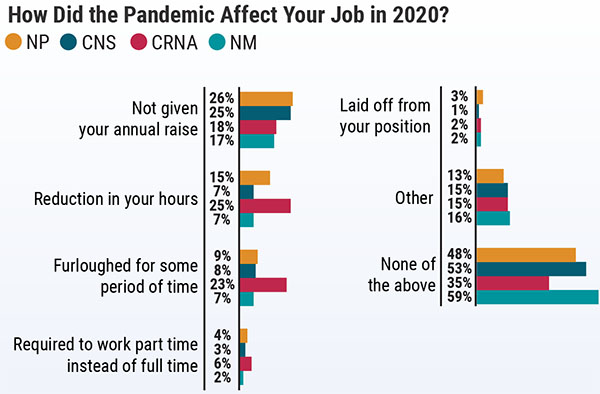
Gross income growth
Despite the undeniable impact of the pandemic, in most cases, average compensation for APRNs increased in 2020 compared to the previous year, underscoring the financial benefit of working as an advanced practice nurse. Among NPs, average gross income increased from $113,000 per year to $116,000 per year and more than half (51%) of NP respondents reported an increase in salary over the prior year.
NP salary by setting, education, specialty
Consistent with previous years, NPs who work in hospital-based inpatient care reported the highest annual incomes (average annual income of $125,000), followed by hospital-based outpatient settings or clinics (average annual income of $117,000).
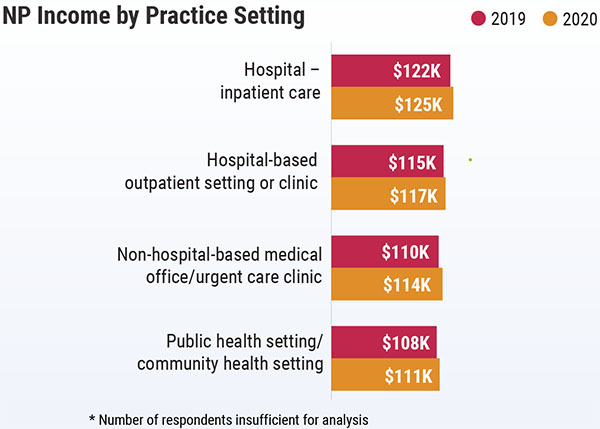
NPs who hold a doctorate degree (PhD or DNS) make, on average, about 5 percent more than those with a master’s degree. And while a majority of NP survey respondents are certified as family NPs (63%), psychiatric and mental health NPs commanded the highest salaries (average annual income of $128,000).
NP salary by employer type
Annual earnings also varied by employment type. APRNs who were self-employed or independent contractors out-earned their counterparts employed by a medical group, hospital or private APRN practice. The trend holds for NP salaries, with self-employed NPs earning slightly more than NPs employed by a medical group or hospital (data not sufficient for analysis of private NP practice).
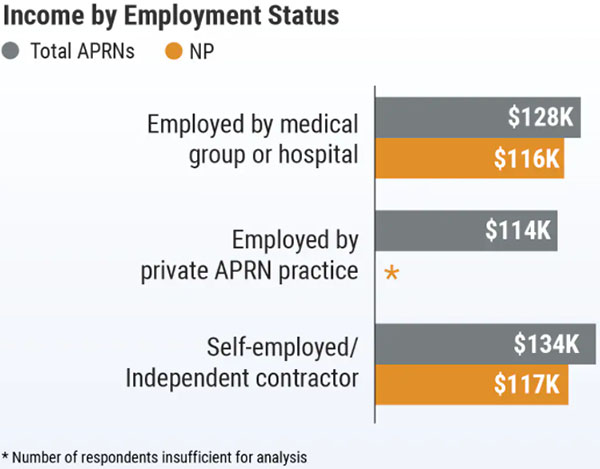
NP salary by region, community
The report demonstrated a wide variance in NP salary by region. NPs in the Pacific region (California, Hawaii, Oregon and Washington) earned the most, with an average annual income of $136,000. A U.S. Bureau of Labor Statistics’ occupational employment and wage statistics survey found that California paid NPs the most at a mean annual wage of $145,970, while Washington paid NPs $126,480, Hawaii $118,780, and Oregon $118,600.
NPs in the East South Central region (Alabama, Kentucky, Mississippi, Tennessee) earned the least, with an average annual income of $105,000. Per the same BLS survey, Alabama paid NPs a mean annual wage of $99,790, Kentucky paid $102,460, and Mississippi and Tennessee paid $109,550 and $99,370 respectively.
However, NPs in both regions experienced a lift in earnings in 2020 compared with the previous year.
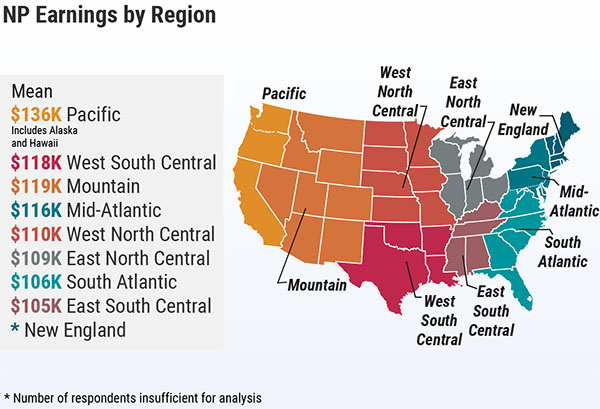
The survey further explored the impact of community type on NP salary and found NPs earned the most in urban settings and the least in rural settings.
Importantly, reported incomes were not adjusted for cost of living. When evaluating comparative pay, it’s important to consider the costs of housing, transportation, and food.
Gender disparities
Among those surveyed, males represented just 9% of NP respondents. However, male NPs earn considerably more on average than their female peers, with an average annual salary of $127,000 compared to $114,000, demonstrating that there is still need to improve gender equity in the NP profession.
While the survey may not be able to explain all contributors to the gender discrepancy in NP salaries, the survey did find male NPs are more likely to earn supplemental income, own their own practices, and work in higher-wage settings, such as hospital-based acute care.
Do NPs feel fairly compensated?
When asked whether they feel fairly compensated, 57% of APRNs answered affirmatively — a proportion which dropped compared to 2019 (63%). However, NPs were less likely to report feeling fairly compensated than other APRN professional, at just over half (53%).
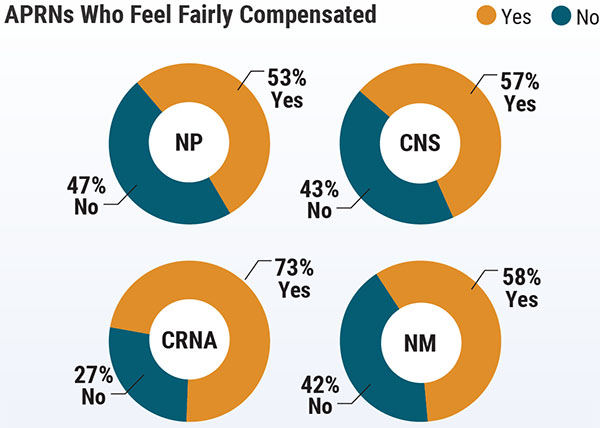
Opportunities for higher earnings for NPs
By many metrics, NP salaries showed a growth trend in 2020, despite the COVID pandemic. Even so, the pandemic did have an adverse effect on employment status and earning potential for some practitioners. NPs can increase their income by continuing their education and focusing on certain specialties and work settings, including exploring self-employment opportunities such as working locum tenens as an independent contractor.
Interested in learning more about locum tenens for NPs? Give us a call at 954.343.3050 or view today’s NP job openings.
Chart images from Medscape.com

